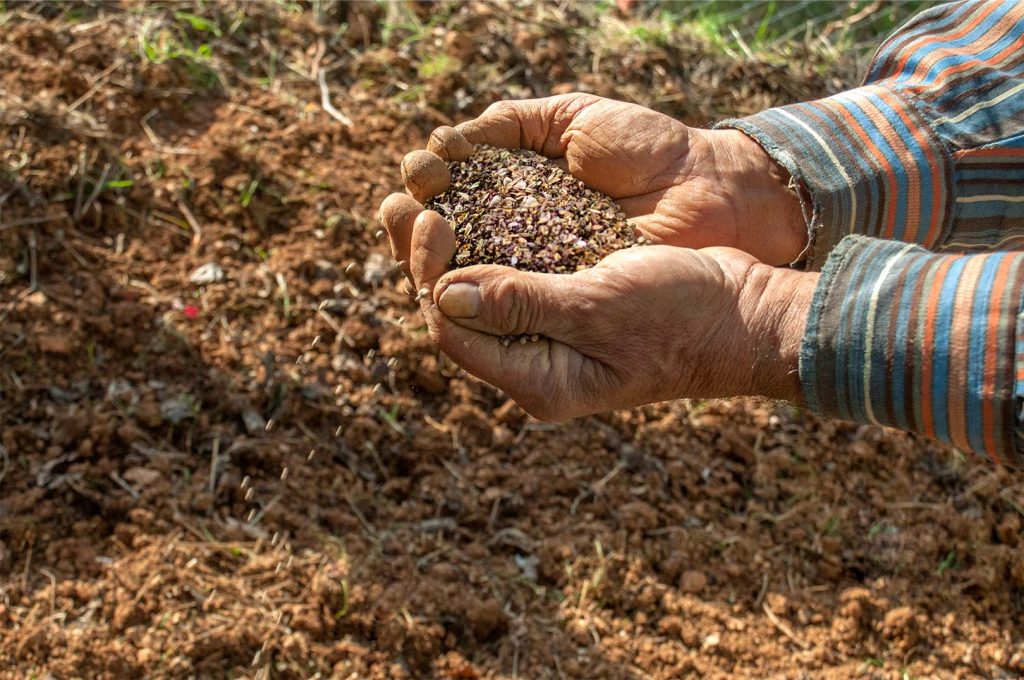
Guide for Achieving Seed-to-Soil Contact in SMALL AREAS
Table of Contents
There are many ways to achieve seed-to-soil contact, including drilling seed or dragging the site paired with broadcasting seed. However, in smaller plantings, these mechanical options may not be a great choice because of the small amount of space involved. If this is the case, consider the following techniques to get seed-to-soil contact when broadcasting seed on top of the soil.
Why be concerned about seed-to-soil contact?
For a seed to germinate, it needs to absorb water from the soil. If a seed becomes suspended above the soil when it is broadcasted, it will not be able to take in water, and it is also at a greater risk of being eaten by a bird. So, it is necessary to get the seed in contact with the soil instead of being on top of a leaf. The seed doesn’t necessarily have to be buried beneath the soil to achieve seed-to-soil contact, it can simply be embedded in the soil, and if it is buried, it should be no more than 1/8 to 1/4 inch beneath the soil surface (the exception is Eastern Gamagrass).
Methods of getting seed-to-soil contact in small areas
Once the principle of seed-to-soil contact is understood, there are many creative ways to achieve it. Here are a few for small areas.
- Raking – a rake can serve as a means to allow small seeds to sift down through excessive thatch and also break up capped or crusted soil surfaces. A broom rake is our favorite rake for this purpose. When using a rake in seedbed preparation, it is basically serving as a handheld drag, and more tips and cautions can be found in the Dragging Guide. To see the process of raking, watch the video Preparing Your Seedbed: Seed-to-Soil Contact.
- Dragging – if the area is bigger than is practical to take on with a rake in hand, dragging with small equipment may be an option. Consider an ATV or UTV pulling a set of box springs or a small cedar or blackjack oak tree . More information about dragging can be found in the Dragging Guide and the video Preparing Your Seedbed: Seed-to-Soil Contact.
- Controlled Burn – If there is a lot of thatch on the soil surface, a controlled burn can be an excellent tool for removing it. As always, understand that fire can be a dangerous tool and seek training in its use.
- Chickens – chickens like to scratch around in the soil in search of bugs and seeds. In the process, they move plant residue and break up the soil. To allow chickens access to the area to be seeded PRIOR to seeding can help to lessen the thatch and fluff it up. Do not let the chickens be in the area if it is too wet because they can cause compaction or crusting of the soil. Also, make sure the chickens do not have access to the area after it has been seeded. Lastly, be aware that chicken feed can contain bad weed problems. So, feeding a processed feed (e.g. ground and pelletized) can be a good idea. Because the chickens are doing much the same thing as a drag, some of the tips and concerns in the Dragging Guide may also be helpful.